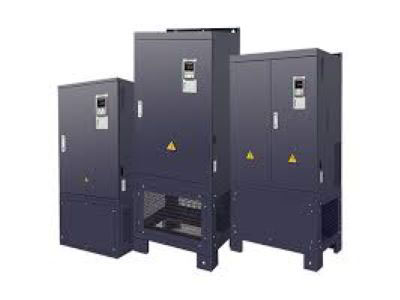Key Takeaway
IGBT stands for Insulated Gate Bipolar Transistor, a crucial component in Variable Frequency Drives (VFDs). These devices enable VFDs to efficiently control motor speed and torque by switching high currents with minimal losses. Unlike traditional transistors, IGBTs combine the high efficiency of Bipolar Junction Transistors (BJTs) with the easy gate control of MOSFETs, making them ideal for high-power applications like VFDs.
In practical terms, IGBTs help VFDs operate quietly by using switching frequencies that are beyond the range of human hearing, reducing audible noise. This technological advancement not only improves user comfort but also enhances the overall reliability and efficiency of VFD-driven systems in industrial settings.
Introduction to IGBT Technology
Insulated Gate Bipolar Transistor (IGBT) is a crucial component in modern Variable Frequency Drives (VFDs). It’s a semiconductor device that combines the advantages of Bipolar Junction Transistors (BJTs) and Metal-Oxide-Semiconductor Field-Effect Transistors (MOSFETs). With IGBTs, VFDs can efficiently control electric motors by modulating the frequency and voltage of the power supplied to the motor. This not only improves performance but also saves energy. Understanding IGBT technology is essential for anyone working with VFDs, as it plays a vital role in ensuring efficient motor operation.

Role of IGBT in VFD Operation
In VFDs, the Insulated Gate Bipolar Transistor (IGBT) plays a crucial role in managing motor speed and torque with high precision. The IGBT switches electrical signals at incredibly high speeds, converting DC voltage into a variable AC output. This process is essential for controlling the speed of AC motors accurately.
The rapid switching capability of IGBTs significantly reduces power losses, enhancing the overall efficiency of the drive. By regulating the power delivered to the motor, IGBTs ensure smooth acceleration and deceleration, minimizing mechanical stress on the system. This smooth control is particularly important in applications requiring variable speed operations, such as conveyors, pumps, and fans.
Furthermore, the efficiency and reliability of IGBTs contribute to the longevity and performance of VFD systems. They allow for precise control, which is vital for industrial applications where maintaining consistent motor speed and performance is critical. Understanding the role of IGBTs helps engineers optimize VFD systems for better energy efficiency and operational effectiveness.
You May Like to Read
Benefits of Using IGBT in VFDs
The use of Insulated Gate Bipolar Transistors (IGBTs) in Variable Frequency Drives (VFDs) offers numerous advantages, making them highly preferred in industrial applications. Firstly, IGBTs provide high efficiency and reliability, which leads to lower energy consumption and operational costs. This efficiency translates into significant savings over time. Additionally, IGBTs allow for precise speed control of motors, enhancing the performance of connected machinery. This precision is crucial in applications requiring exact motor speeds.
Another key benefit is the high switching frequency of IGBTs. This reduces the size of passive components like inductors and capacitors, resulting in more compact and lightweight VFD designs. Compact designs are easier to install and integrate into existing systems. Furthermore, the robustness of IGBTs ensures a longer service life and minimizes the need for frequent maintenance, thereby increasing overall productivity. This durability is particularly beneficial in demanding industrial environments.
Common Issues and Solutions with IGBT
IGBTs (Insulated Gate Bipolar Transistors) are crucial in modern electronics, but they can face issues like overheating, short circuits, and electrical noise. Overheating is a frequent problem due to excessive current or inadequate cooling. This can be mitigated by ensuring proper heat dissipation through heat sinks and cooling fans. Short circuits, which can damage both the IGBT and the VFD, can be prevented by using protection circuits like fuses and circuit breakers. Electrical noise, another common issue, can interfere with sensitive electronics. This can be minimized by employing proper grounding and shielding techniques. Regular maintenance and monitoring are essential to identify and address these issues promptly. By understanding these common problems and their solutions, engineers can ensure the reliable and efficient operation of IGBTs in various applications.
Future Trends in IGBT Technology
The future of IGBT technology looks promising with ongoing advancements aimed at improving performance and efficiency. Researchers are working on developing next-generation IGBTs with lower conduction and switching losses, which will further enhance the energy efficiency of VFDs. Innovations in semiconductor materials, such as silicon carbide (SiC) and gallium nitride (GaN), are expected to play a significant role in the evolution of IGBTs. These materials offer superior electrical properties, enabling higher operating frequencies and better thermal management. As these technologies mature, they will pave the way for more compact, efficient, and reliable VFD solutions.
Conclusion
In conclusion, IGBTs are indispensable in modern VFDs, providing efficient and reliable control over electric motors. Their ability to switch high voltages and currents at high speeds makes them ideal for industrial applications where precision and efficiency are paramount. The continuous advancements in IGBT technology promise even better performance and energy savings in the future. For engineers working with VFDs, understanding the role and functioning of IGBTs is crucial for optimizing motor control systems. By leveraging the benefits of IGBTs, industries can achieve greater productivity, reduced energy costs, and enhanced operational efficiency.
